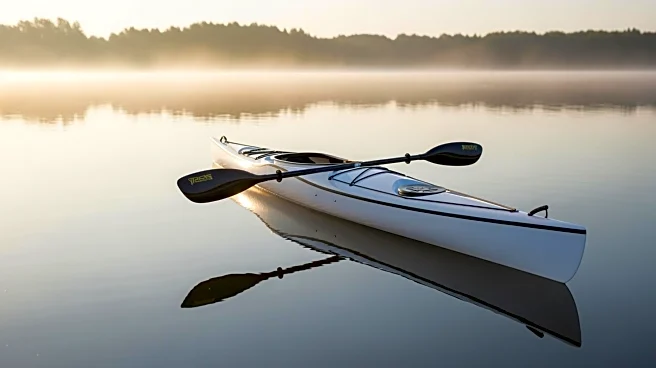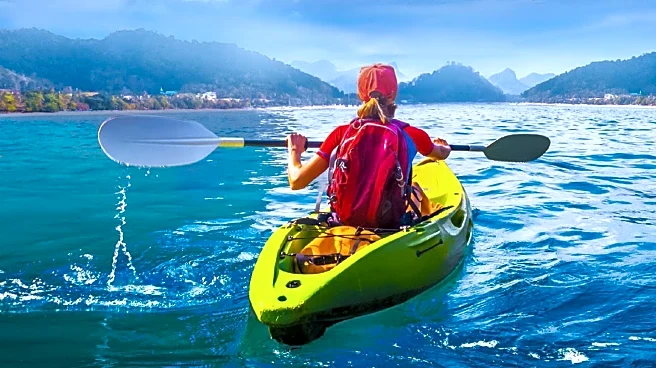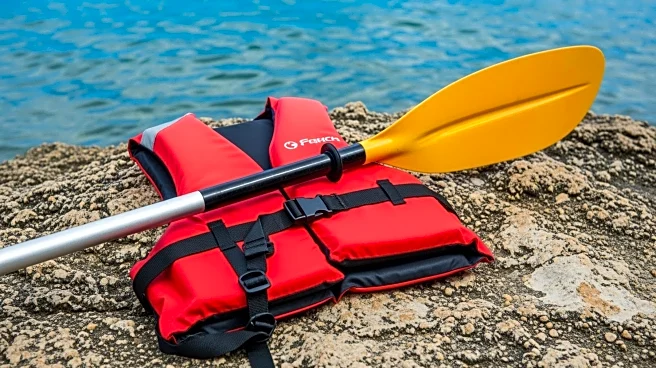What's Happening?
Kayaking is a versatile water sport that involves using a double-bladed paddle to navigate a small boat called a kayak. It can be pursued recreationally or competitively, with various types such as recreational,
whitewater, sea, and racing kayaking. The sport has historical roots dating back to indigenous cultures, particularly the Inuit, who used kayaks for hunting and transportation. Over time, kayaking evolved into a competitive sport, gaining recognition with its inclusion in the 1936 Berlin Olympics. Today, it is enjoyed globally, offering both leisurely and challenging experiences.
Why It's Important?
Kayaking provides numerous benefits, including physical fitness, mental clarity, and a connection to nature. It offers a full-body workout, engaging muscles in the arms, back, and core, while also improving cardiovascular health. The sport's versatility allows participants to choose between calm water paddling and more intense whitewater challenges, catering to different skill levels and preferences. As a recognized sport, kayaking also presents competitive opportunities, fostering skill development and strategic thinking.
What's Next?
As kayaking continues to grow in popularity, advancements in equipment and techniques are likely to enhance the experience for both recreational and competitive paddlers. The sport's inclusion in international competitions may further increase its visibility and attract new participants. Additionally, the ongoing development of safety measures and environmental awareness will play a crucial role in ensuring sustainable and enjoyable kayaking experiences.
Beyond the Headlines
Kayaking's rich history and cultural significance contribute to its status as a legitimate sport. Its origins in indigenous practices highlight the importance of preserving traditional knowledge and respecting natural environments. As the sport evolves, it may also influence outdoor recreation trends and promote environmental stewardship among participants.













